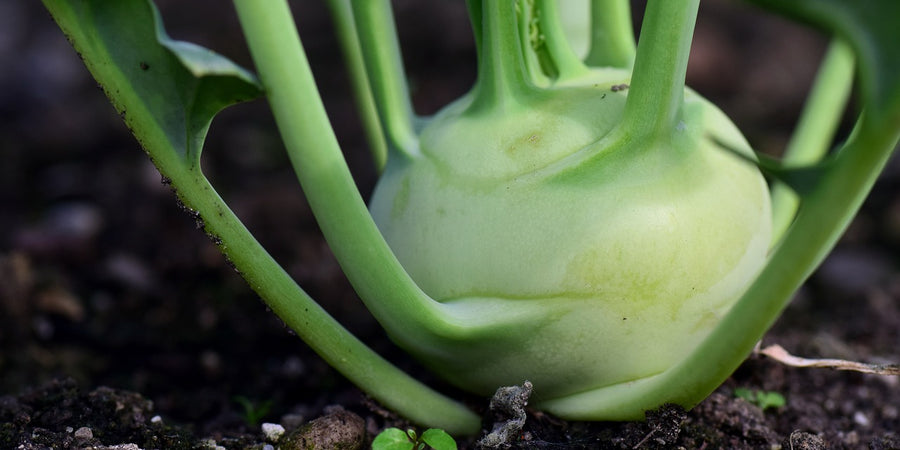How To Grow Kohl Rabi

Kohl Rabi originates in the middle east and came to Europe with Crusaders returning from the Holy Land. This alien spaceship like vegetable was once a popular vegetable here that fell out of fashion, until recently.
Kohl Rabi is a cabbage with swollen stem and could be mistaken for a turnip growing out of the ground. With their striking leaves and stems they make a great addition to an ornamental display garden.
Here's Our Guide to Growing Kohl Rabi:
How, Where & When to Grow Kohl Rabi
Kohl Rabi grows well in most garden situation, which has been improved with well-rotted organic matter. For an early crop, sow seeds from February-March under cover in modules 1cm deep; planting out in late spring. Or direct sow in drills with 2cm deep, in late spring continuing until mid-August. Suitable conditions will see germination taking place between 3 and 6 days.
Kohl Rabi is a fast growing crop can provide a constant supply when batches of seeds are sown every 2 weeks and will do just as well in containers too.
Distance
Thin out seedlings to 25cm between plants keeping row distance at 30cm.
Regular Care
Water during dry spells and keep crop covered with netting protecting plants against cabbage white butterfly and bird pest.

Harvesting Kohl Rabi
Crops are ready to harvest in 7-8 weeks from sowing. They should be harvested when swollen stem is just slight larger that golf ball.
Nutrition
Kohl Rabi is very low in Saturated Fat and Cholesterol. It is also a good source of Thiamin, Folate, Magnesium and Phosphorus, and a very good source of Dietary Fiber, Vitamin C, Vitamin B6, Potassium, Copper and Manganese.
Cooking
Whilst the bulb is the star of the show don’t ignore the leaves they are delicious and can be eaten raw in salads if they’re young and tender, or sautéed or steamed like mustard greens. Kohlrabi needs little prep, but you should always peel off the tough outermost layer of the bulb with a vegetable peeler first. Go raw…make a slaw, grate on to salads, or just dip them like you would a radish. Add to soups, especially creamy vegetable pureed soups. Roast with other veggies for a hearty accompaniment.
Growing Guides
If you're thinking of sowing other vegetable and herb seeds, discover more of our growing guides.




